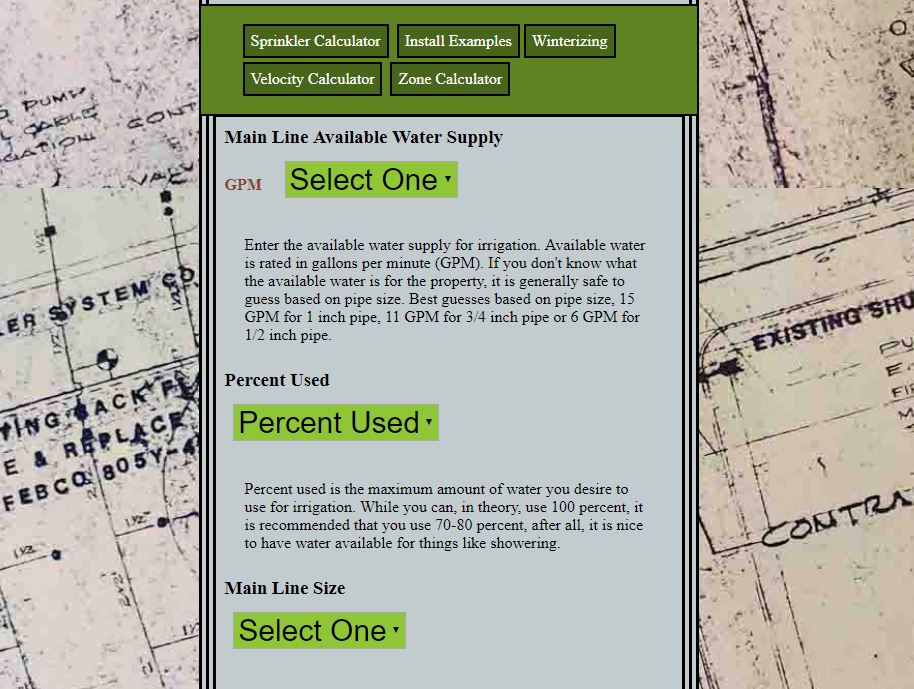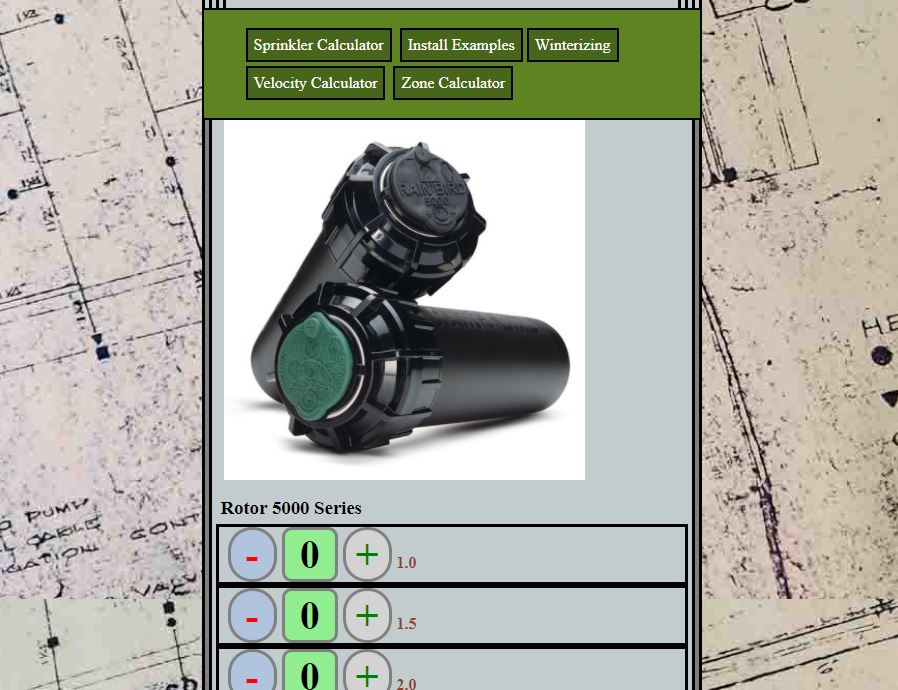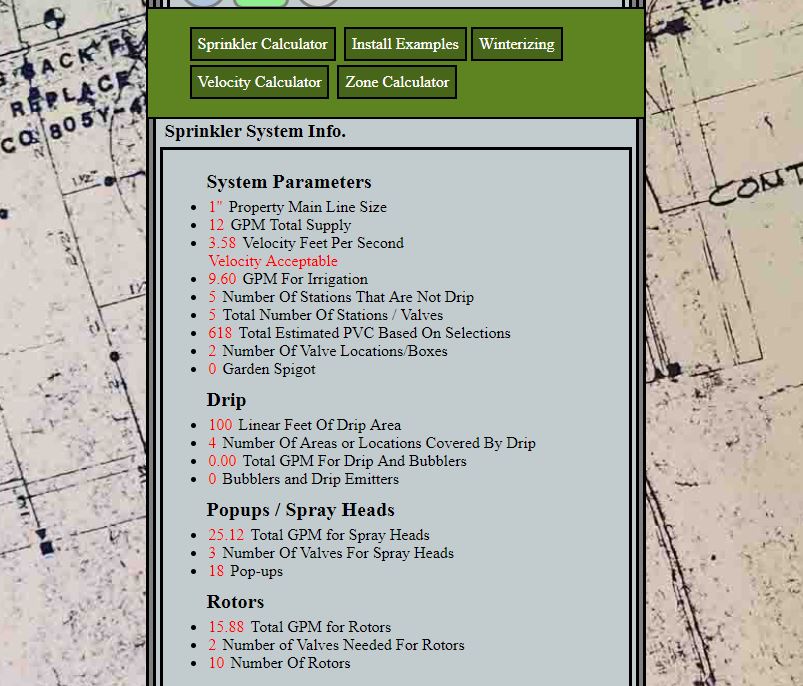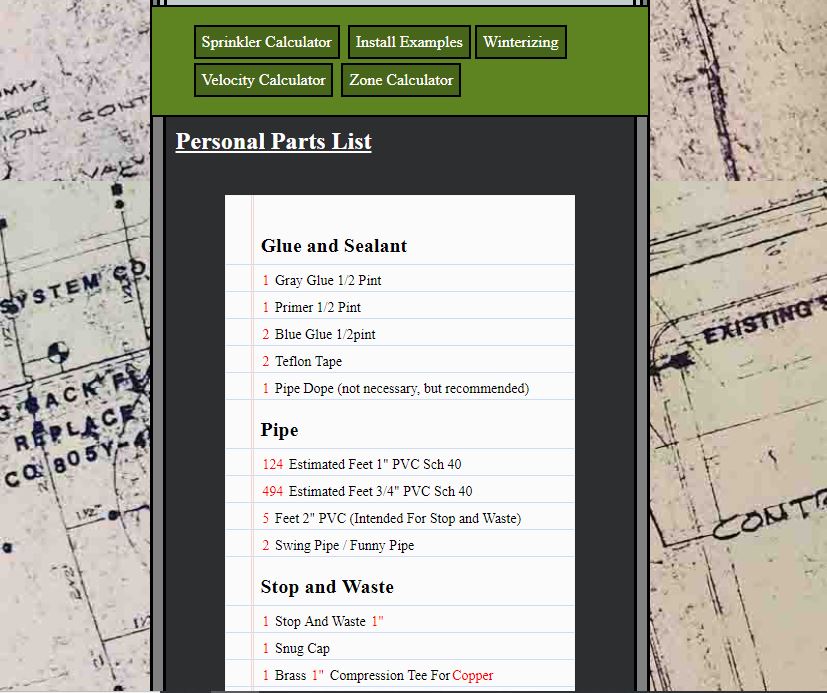The Sprinkler System Calculator is a tool designed to help the installer save time and money. I personally have been using this formula for several years. The best part about using the calculator is that it decreases the overall part runs when doing an installation. This is a huge savings, nearly doubling my productivity for the last several years. If you are an installer, or even just a homeowner installing your own system, I suggest you give it a try. When you see the list of parts suggested, you will likely see that it was worth the effort it took to learn how to use it.
How to use the Sprinkler System Calculator.
I tried to design the Sprinkler System Calculator so that the installer can input the information while he/she is performing the estimate. Starting at the main line and working their way around the property asking questions of the homeowner as they input the information. The Sprinkler System Calculator works best if you fill out the inputs in order.

Sprinkler Heads
Inputting sprinkler heads is easy. Simply measure out the property and insert flags where the sprinkler heads need to be installed. When all the flags are in place, input each sprinkler head location by simply pressing the plus (+) button next to the corresponding sprinkler head in the Sprinkler System Calculator. If you make a mistake simply press the subtract (-) button to remove the mistake. As I input sprinkler heads, I remove the corresponding flag and mark the location with marking paint.

When you are done inputting a sprinkler head for every corresponding flag you will have a full list of parts and system parameters listed at the bottom of the page.

The parameters gives you the likely total number of valves needed as well as the total GPM flow for each type of Sprinkler head. The sprinkler system calculator does allow for drip installation, I will go over the installation for drip systems in another post.

The parts list may seam extensive, but it is likely to have the majority of the parts needed to install the system you are creating.